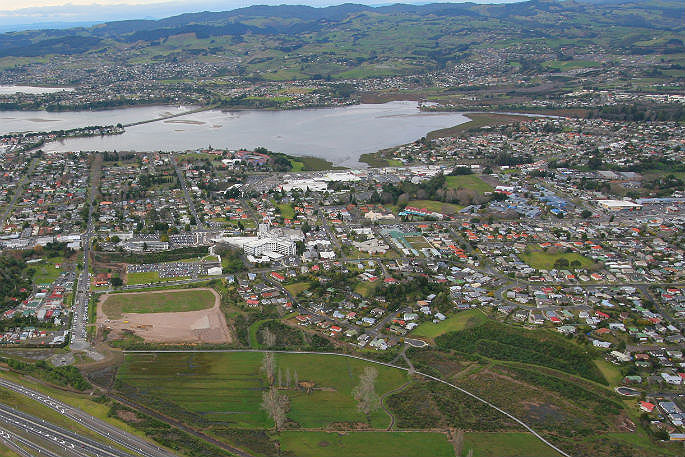The correction in house prices is settling in, as the market continues to cool from rising interest rates and an oversupply of listings.
The QV House Price Index for June shows credit constraints are limiting the number of new buyers entering the market in some areas.
A combination of newly completed developments and existing property being listed for sale means there's significantly more sellers than buyers, which is putting downward pressure on prices.
The average home decreased in value by 3.4 per cent nationally over the past three-month period to the end of June, weakening further from the 2.2 per cent decrease in quarterly value change seen in May, with the national average value now sitting at $1,011,188.
This represents an average annual increase of 7.2 per cent, down from 10.5 per cent annual growth last month.
Tauranga's slower-than-average rate of reduction has caught up with the rest of New Zealand, reports QV.
Until June, home values had been easing down at a slower rate than the national average.
Now QV's latest figures show that Tauranga's home values have fallen by an average of 3.5 per cent over the last three months – a fraction of a percentage above the national average.
"Many prospective buyers are playing the waiting game right now, holding off unless they find a property which is high in desirability or appears to be good value for money," says QV property consultant Derek Turnwald.
"As a result, demand for housing of all values has declined and is now generally subdued. Listing numbers have increased and listing periods are extending as supply increases and demand decreases."
He says it's unlikely that prices will stabilise in the short term – though it appears that first-home buyers are beginning to show some 'renewed optimism” as lending criteria began to relax somewhat, along with the increase in the income cap for the First Home Grant.
"FOMO (fear of missing out) has given way to a fear of paying too much.
"Prospective purchasers are taking longer to deliberate and negotiate prices with vendors, who are having to lower their expectations and meet the market."
QV general manager David Nagel says just six months ago the national market was tracking at just under 30 per cent value growth per annum.
He says this has fallen back quite dramatically, down to single figures, with further reductions inevitable over the coming months as this home value correction continues across New Zealand.
Wellington and Napier are showing the largest three-month value reductions with falls of 6.6 per cent and 5.4 per cent respectively.
Nelson and Hamilton, at 5.2 and 4.7 per cent reduction in values respectively, are not very far behind.
Only one of the 16 major urban areas that QV monitors has shown an increase in three-monthly house price value, with Queenstown-Lakes defying the downward trend with 1.9 per cent home value growth for the quarter.
"A 3.4 per cent reduction over a three-month period doesn't sound like much when you consider the gains over the previous couple of years, but when you look at the fall in value throughout the first six months of 2022, it becomes a lot more significant, particularly if you purchased at the peak of the market in late 2021."
David points out that the most buoyant markets from 2020-2021 are the first to show a dip in prices, as evidenced by the six-monthly change data.
Palmerston North's home values have come back on average 6.9 per cent during the first six months of the year, with Hamilton values also hit hard at 6.4 per cent.
The Wellington region also saw big increases throughout 2020-2021, but is now showing an average correction of eight per cent for the calendar year.
Auckland values have come back 5.6 per cent in the same period.
Across the regions, Canterbury is showing the most resilience.
Although growth is tapering off, Canterbury still recorded an average value increase of 20.9 per cent since this time last year.
The Taranaki region is also still showing strong annual growth at 15.5 per cent, with Northland not far behind on 15 per cent annual growth.
"All eyes will be on the next Reserve Bank OCR announcement as interest rates are expected to rise further to counter inflationary pressures.
"While prices are retreating across the country, the increase in borrowing costs means debt servicing and credit availability remain key stumbling blocks for new entrants to the market."



0 comments
Leave a Comment
You must be logged in to make a comment.